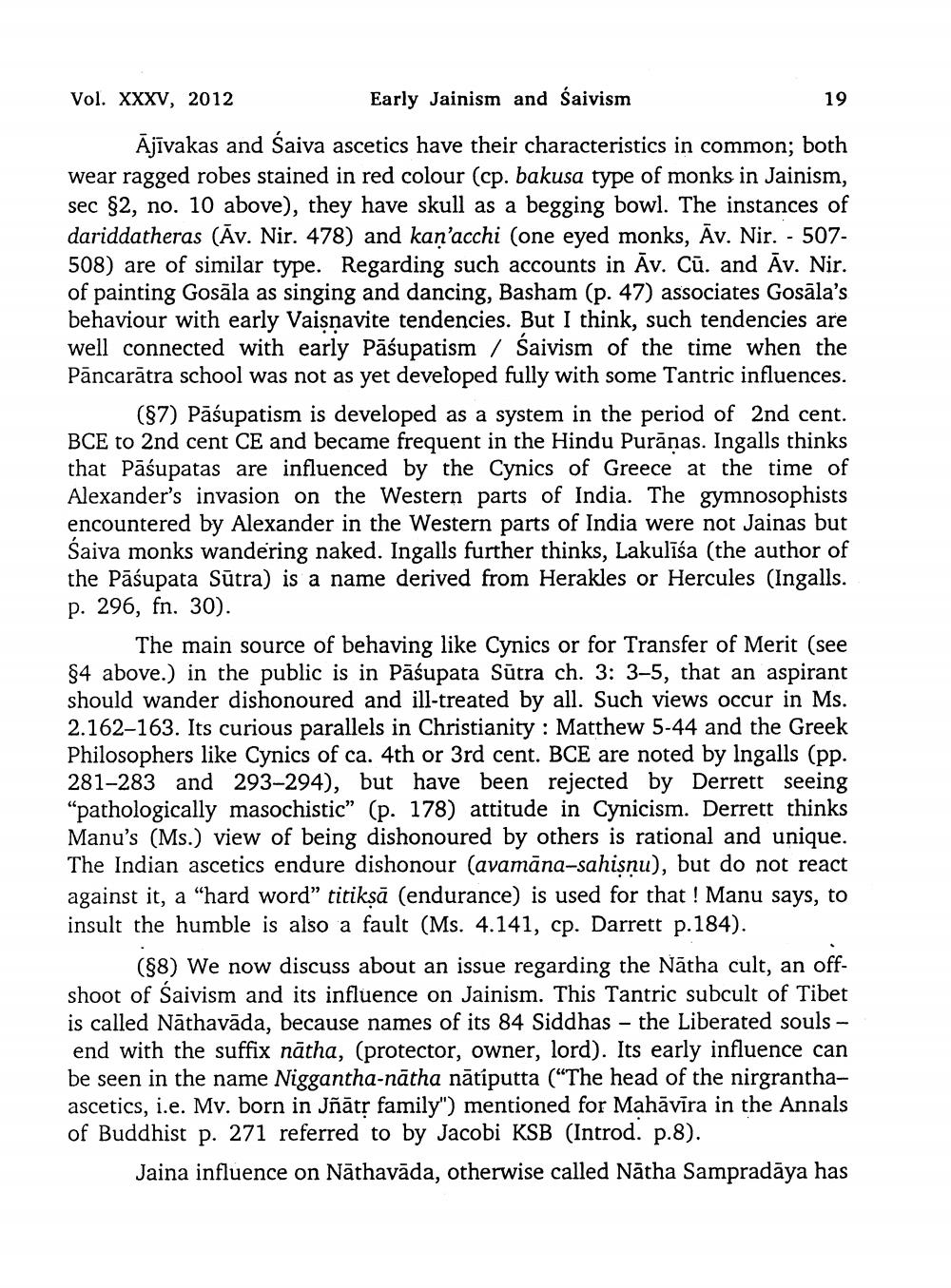________________
Vol. XXXV, 2012
Early Jainism and saivism
19
Ājīvakas and saiva ascetics have their characteristics in common; both wear ragged robes stained in red colour (cp. bakusa type of monks in Jainism, sec 82, no. 10 above), they have skull as a begging bowl. The instances of dariddatheras (Āv. Nir. 478) and kan'acchi (one eyed monks, Āv. Nir. - 507508) are of similar type. Regarding such accounts in Āv. Cū. and Āv. Nir. of painting Gosāla as singing and dancing, Basham (p. 47) associates Gosāla's behaviour with early Vaisnavite tendencies. But I think, such tendencies are well connected with early Pāśupatism / Saivism of the time when the Pancarātra school was not as yet developed fully with some Tantric influences.
(87) Pāśupatism is developed as a system in the period of 2nd cent. BCE to 2nd cent CE and became frequent in the Hindu Purānas. Ingalls thinks that Pāśupatas are influenced by the Cynics of Greece at the time of Alexander's invasion on the Western parts of India. The gymnosophists encountered by Alexander in the Western parts of India were not Jainas but Saiva monks wandering naked. Ingalls further thinks, Lakulīša (the author of the Pasupata Sūtra) is a name derived from Herakles or Hercules (Ingalls. p. 296, fn. 30).
The main source of behaving like Cynics or for Transfer of Merit (see $4 above.) in the public is in Pāśupata Sūtra ch. 3: 3-5, that an aspirant should wander dishonoured and ill-treated by all. Such views occur in Ms. 2.162–163. Its curious parallels in Christianity : Matthew 5-44 and the Greek Philosophers like Cynics of ca. 4th or 3rd cent. BCE are noted by Ingalls (pp. 281-283 and 293–294), but have been rejected by Derrett seeing "pathologically masochistic” (p. 178) attitude in Cynicism. Derrett thinks Manu's (Ms.) view of being dishonoured by others is rational and unique. The Indian ascetics endure dishonour (avamāna-sahisnu), but do not react against it, a "hard word” titiksā (endurance) is used for that! Manu says, to insult the humble is also a fault (Ms. 4.141, cp. Darrett p.184).
(88) We now discuss about an issue regarding the Nātha cult, an offshoot of Saivism and its influence on Jainism. This Tantric subcult of Tibet is called Nāthavāda, because names of its 84 Siddhas - the Liberated souls - end with the suffix nātha, (protector, owner, lord). Its early influence can be seen in the name Niggantha-nātha nātiputta (“The head of the nirgranthaascetics, i.e. Mv. born in Jñātr family") mentioned for Mahāvīra in the Annals of Buddhist p. 271 referred to by Jacobi KSB (Introd. p.8).
Jaina influence on Nāthavāda, otherwise called Nätha Sampradāya has




